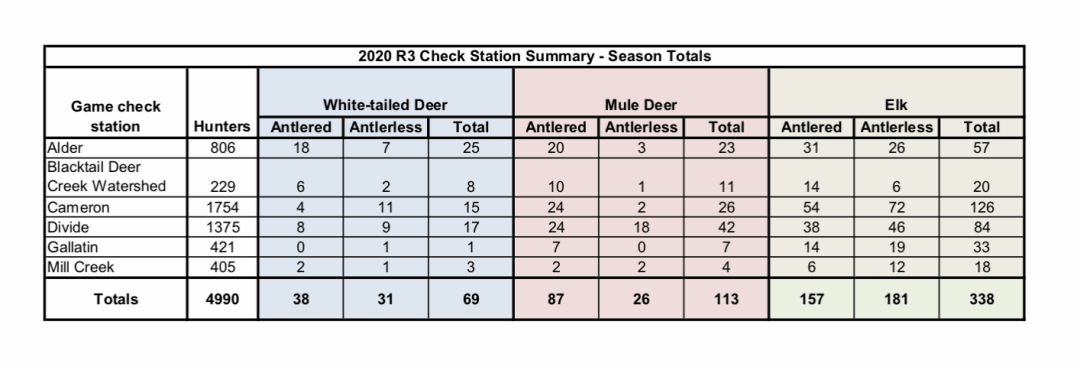The Center for American Indian and Rural Health Equity, or CAIRHE, at Montana State University has been awarded a two-year grant from the National Institutes of Health to examine COVID-19 testing strategies among underserved populations in Montana and Washington.
The grant of $1,797,140 to CAIRHE is part of the NIH’s $1.4 billion Rapid Acceleration of Diagnostics initiative, or RADx, created in the early weeks of the COVID-19 pandemic to address the need for scaled-up testing across the country. A component targeting underserved populations known as RADx-UP funds community-engaged projects, including CAIRHE’s, that partner with vulnerable communities hardest hit by the pandemic.
The CAIRHE project is one of 70 RADx-UP grants nationwide and the only one in Montana.
“The significant health disparities that already existed among Native and rural communities in Montana and our region have become even more pronounced with COVID-19,” said physician Alexandra Adams, director of CAIRHE and principal investigator for the new study. “Because of poor access to testing in those areas and high rates of existing chronic disease, we are very concerned about the significant impact of COVID-19 in these communities.”
CAIRHE and MSU will lead the study, partnering with the University of Washington’s School of Medicine and Institute of Translational Health Sciences (ITHS); the Fred Hutchinson Cancer Research Center in Seattle; and Salish Kootenai College and the Confederated Salish and Kootenai Tribes on the Flathead Reservation in Montana. A local community advisory board will be involved in all stages of the research in each study location.
“Montana State is committed to building strong, equitable and sustainable partnerships with tribal nations, as well as the University of Washington’s ITHS program,” said Jason Carter, MSU vice president for research, economic development and graduate education. “Dr. Adams and her CAIRHE team are experienced at building meaningful and impactful partnerships, and I am not at all surprised by the NIH investment to this remarkable team.”
The Washington team — led by physicians Matthew Thompson and Paul Drain at UW — will provide expertise on home-based testing as part of the Seattle Coronavirus Assessment Network. Behavioral scientist Linda Ko at Fred Hutchinson and her team will work with their community partners in Washington’s Yakima Valley, home to a large Latino population that includes migrant agricultural workers.
The Montana team — led by Adams and Selena Ahmed at CAIRHE, with Virgil Dupuis and Wendy Westbroek at Salish Kootenai College — will use CAIRHE’s existing research partnerships on the Flathead Reservation to study testing approaches among the area’s Native population.
“These communities are very similar in the rural barriers to testing that they face,” Adams said. “And they’re connected by seasonal farm workers who travel between the two areas, possibly bringing the coronavirus with them.”
In each of the two locations, the project will conduct a 200-person randomized trial in the spring of 2021 that compares two approaches to home-based COVID-19 testing, Adams explained. In the “active” approach, local health educators who are trusted community members will deliver tests to study participants and provide assistance. In the “passive” approach, participants will instead receive test kits by mail or at a pick-up location. All participants will receive culturally adapted printed and video instructions, as well as a survey on their current symptoms and medical conditions.
“It’s our hypothesis that home-based testing will be more efficient, have a greater impact and be better accepted using the active delivery of test kits by trusted community members,” Adams said.
Currently the research team is waiting to see if tests suitable for home use, with results immediately available to the participant, will receive U.S. Food and Drug Administration approval and be commercially available in time for the study. If not, home-based sampling will be analyzed in an alternative way.
The project’s clinical partners in Washington, led by physician Allison Lambert of Providence Medical Group in Spokane, will consult with participants about test results. Those who test positive for COVID-19 will be referred to local public health agencies for contact tracing and clinical follow-up.
Prior to the testing trial, a series of interviews and focus groups in each study community will explore individuals’ knowledge of COVID-19 and preventive measures; beliefs about COVID-19 testing; and cultural factors that affect their testing decisions. This data will help study leaders determine the cultural, social, behavioral and economic barriers to testing that exist in those communities, Adams said.
“Using this information, we can develop the educational materials that will accompany the test kits so that they’re culturally appropriate and most effective for each community,” she added.
Following the trial, the joint study team will evaluate the acceptability and feasibility of the home-based testing approaches through participant surveys. That information will allow CAIRHE and its partners to create testing protocols that could significantly increase home-based testing among Native and Latino communities nationwide, Adams said.
“At the end of the day, our goal is to decrease the devastating impact of COVID-19 in these vulnerable rural areas,” she said.
The CAIRHE-led study, titled Protecting Our Community: A Pragmatic Randomized Trial of Home-Based COVID Testing with American Indian and Latino Communities, is funded by the Office of the Director of the NIH and administered by the National Institute of General Medical Sciences, which provides CAIRHE’s Centers of Biomedical Research Excellence, or COBRE, grant. In 2019 CAIRHE received a competitive renewal of its COBRE grant totaling $10.7 million through 2024.




News Comments
Thank you
Open Auditions for Annie
Monday, Sep. 16, 2024
I’m at the Bozeman airport where your painting, “Blowing East” is displayed. It’s absolutely gorgeous! Bravo, Marci!!
The Artists’ Gallery in Bozeman’s Emerson Cultural Center May Exhibits
Sunday, Jun. 30, 2024
This is so typical of a sign in, which we should not have to do to check if we or some one in our party got a permit. I have been working or "creating an account" for 30 minutes and just get the same ...
Smith River permit drawing results available
Sunday, Mar. 10, 2024
I have struggled with this podcast and my own participation therein, the event itself obviously traumatic, but beyond that my inability to reach anyone and convey anything resembling truth. The person ...
Billings, MT Case Becomes True Crime Podcast | 'An Absurd Result'
Marktokarski
Saturday, Jan. 20, 2024